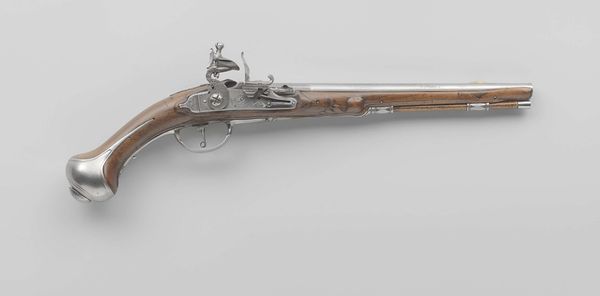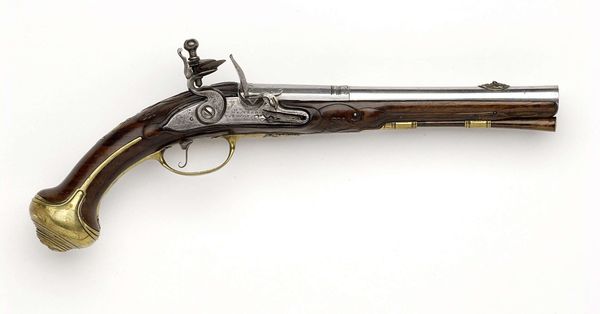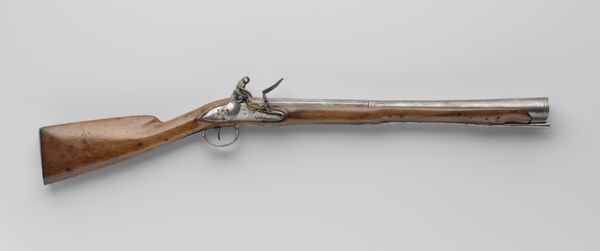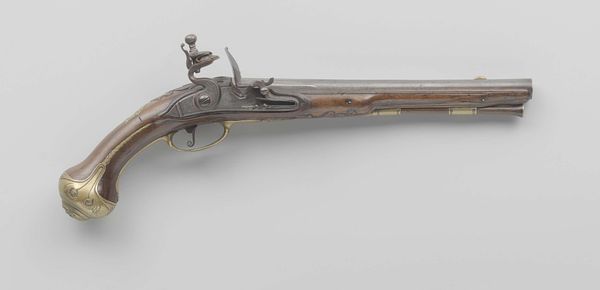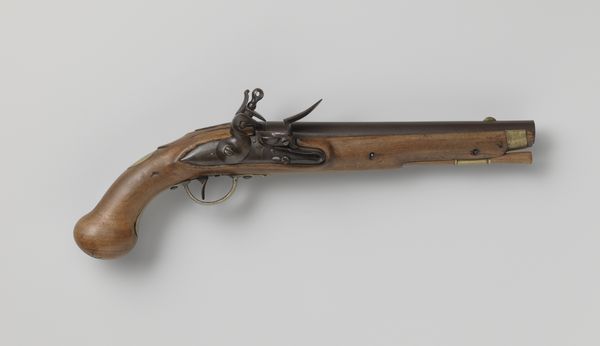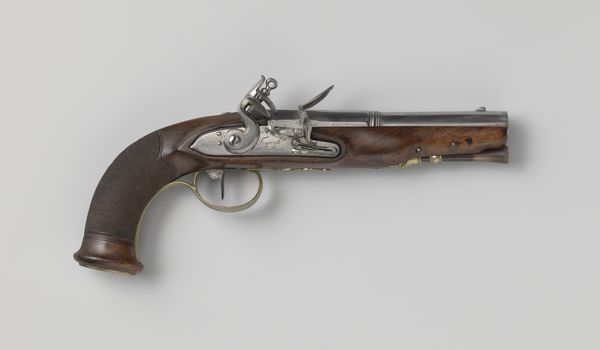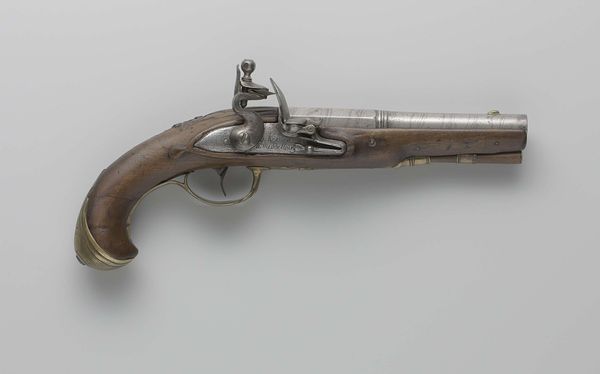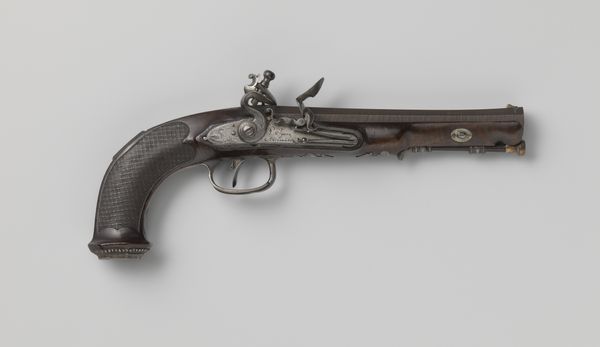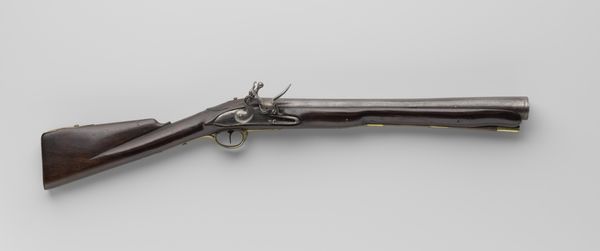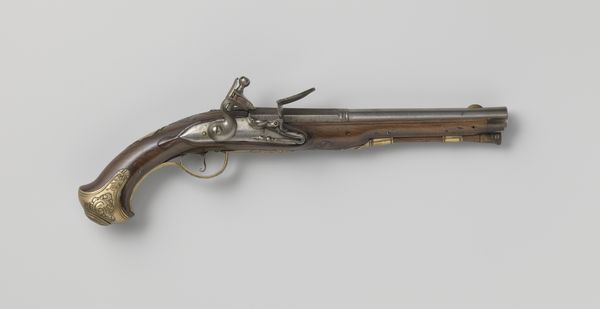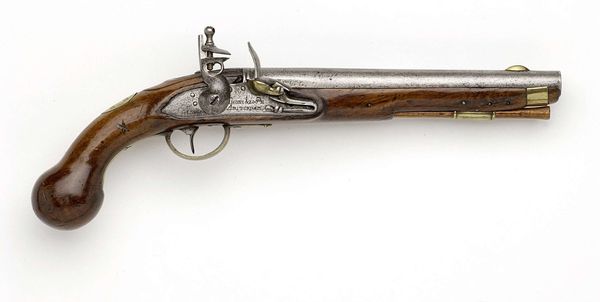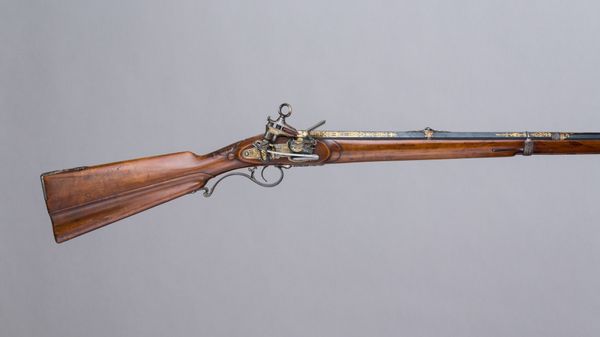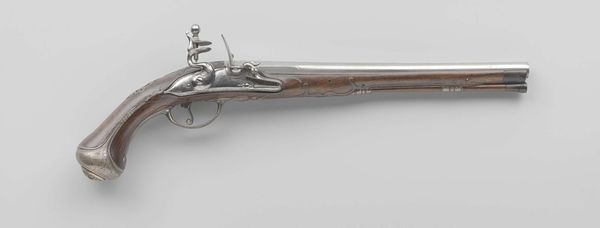
metal, wood
#
dutch-golden-age
#
metal
#
wood
#
history-painting
#
realism
Dimensions: length 26.9 cm, length 14.75 cm, diameter 11.1 mm, weight 410 gr
Copyright: Rijks Museum: Open Domain
Curator: Before us is a striking object: a flintlock pocket pistol for stacked loads, potentially crafted between 1651 and 1689, and currently residing here at the Rijksmuseum. It's attributed to Cornelis Coster. What are your initial thoughts? Editor: Immediately, I’m struck by the interplay of textures. The cool, smooth metal juxtaposed against the warmth of the wood… you can almost feel the different hand skills required to bring these materials together. Curator: Precisely. And understanding those skills in the context of the Dutch Golden Age provides invaluable insight. It speaks volumes about the socio-economic climate. This wasn't just about personal protection; it was also about status, access to materials, and specialized labor. Editor: Absolutely, this wasn't a mass-produced item. You can see the hand of the craftsman in the details, particularly in the engraving on the metal. Consider the access to quality steel and seasoned wood—what kind of networks sustained this creation? How did labor relations impact its overall design? Curator: A fascinating point. Arms like these became symbols of power. Think of the Dutch East India Company, their trade routes, their colonial ambitions. Weapons facilitated dominance. How were such objects displayed or employed? It reveals a great deal about 17th century social and political realities. Editor: The realism in the design interests me; it looks entirely functional, not excessively ornamented. Was this meant to be practical? There's beauty in its mechanics, the pure intention of the weapon revealed. Its materiality suggests utility first, with decoration considered only secondarily. Curator: Yes, function was undoubtedly paramount. This highlights a tension of the period—the burgeoning middle class wanted objects reflecting wealth and status, but perhaps in a more restrained, “practical” fashion compared to older aristocratic displays. Editor: I agree, the craftsmanship really brings that home. It would be interesting to examine how weapons like these moved through the social structure—who owned them, how were they acquired, how long would the artisan take to complete it and what dictated that time-frame? Curator: Precisely. We see it now as a relic within museum walls, but originally, its life and context was intimately bound with trade, colonial ventures, and personal power. It provides a vital entry point into that tumultuous era. Editor: Definitely, studying this pistol helps us recognize not just its aesthetic elements, but the extensive networks of resource extraction, labor and consumption of material it represents, especially the skill needed to produce. It helps give this tool its deep cultural context.
Comments
No comments
Be the first to comment and join the conversation on the ultimate creative platform.
